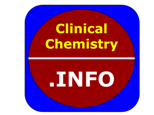Clin Chem Lab Med. 2025 Mar 17. doi: 10.1515/cclm-2024-0962. Online ahead of print.
ABSTRACT
OBJECTIVES: Detecting point mutations with high sensitivity and specificity can be technically very challenging, but it is crucial for early diagnosis and effective drug treatment of cancers. To enable ultrasensitive and ultraspecific detection of single-base mutations in simple and economical ways, we have developed an artificial base mismatches-mediated PCR (ABM-PCR) detection approach.
METHODS: ABM-PCR was applied to quantitative PCR (qPCR) and droplet digital PCR (ddPCR) detection platforms. The impact of mismatches on the thermodynamic stability of the primer-template duplex and the ability of Taq polymerase to catalyze the extension was examined. Effects of the sequence, position, and the number of mismatches on genotyping performance were characterized.
RESULTS: As proof of principle, we demonstrated the feasibility of ABM-PCR in detecting epidermal growth factor receptor (EGFR) and B-Raf proto-oncogene, serine/threonine kinase (BRAF) mutations that are clinically relevant to diagnosis and prognosis of lung and thyroid cancers. Our ABM-PCR enabled the detection of 0.1 % mutation without amplification of the wild-type DNA strand, even in the presence of a 300 ng human genomic DNA background. It enables ultrasensitive (≥95 %) and ultraspecific (≥95 %) diagnosis of clinical samples for thyroid papilloma and lung cancers. Based on these findings, we have established a set of rules and developed a user-friendly web primer design tool for designing effective ABM-PCR primers.
CONCLUSIONS: This study highlights the impact of primer-template mismatches on PCR amplification and provides insights into rational design of effective ABM-PCR primers for detecting single-base mutations with high specificity and sensitivity. It is highly valuable for clinical diagnosis and prognosis use.
PMID:40088879 | DOI:10.1515/cclm-2024-0962
